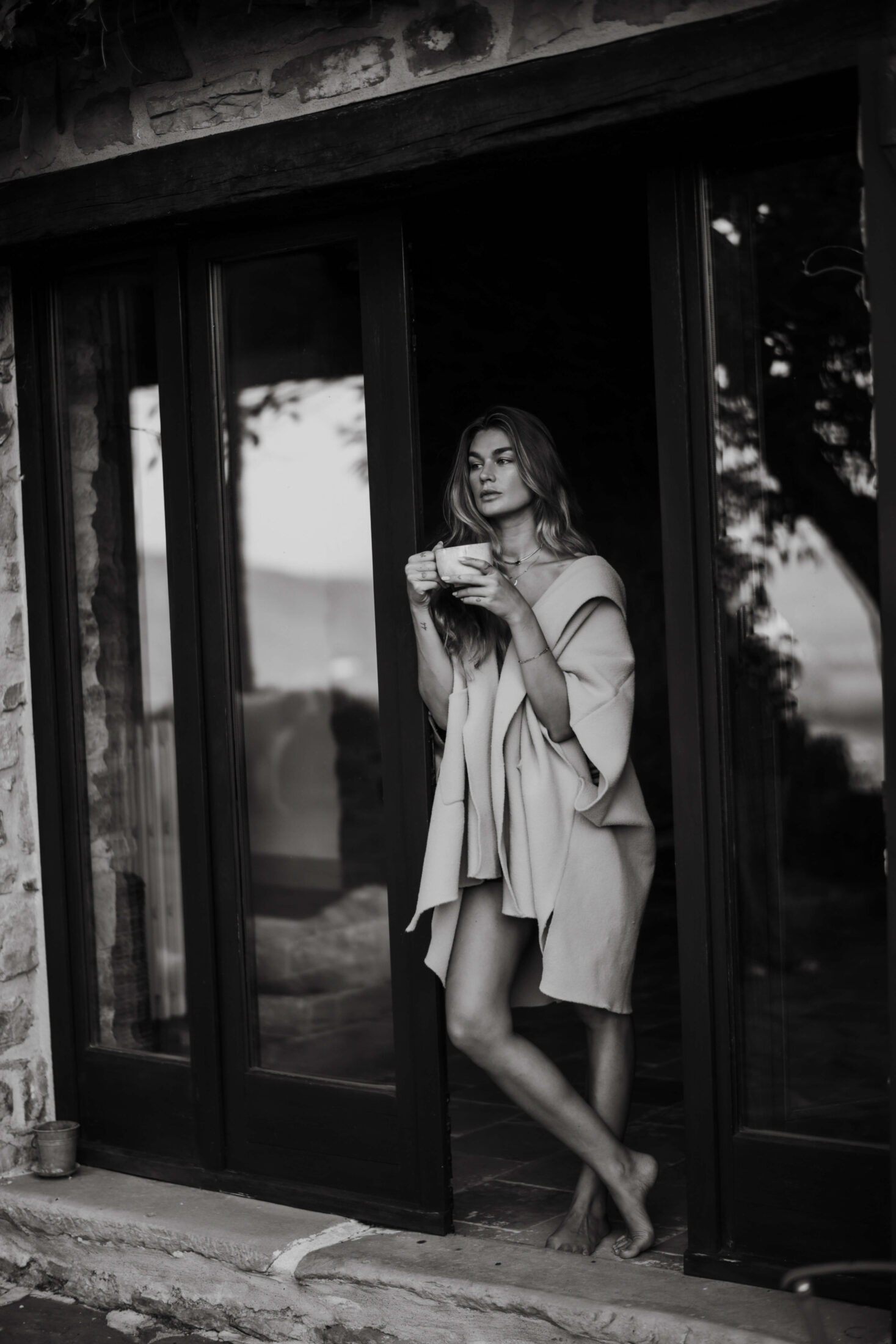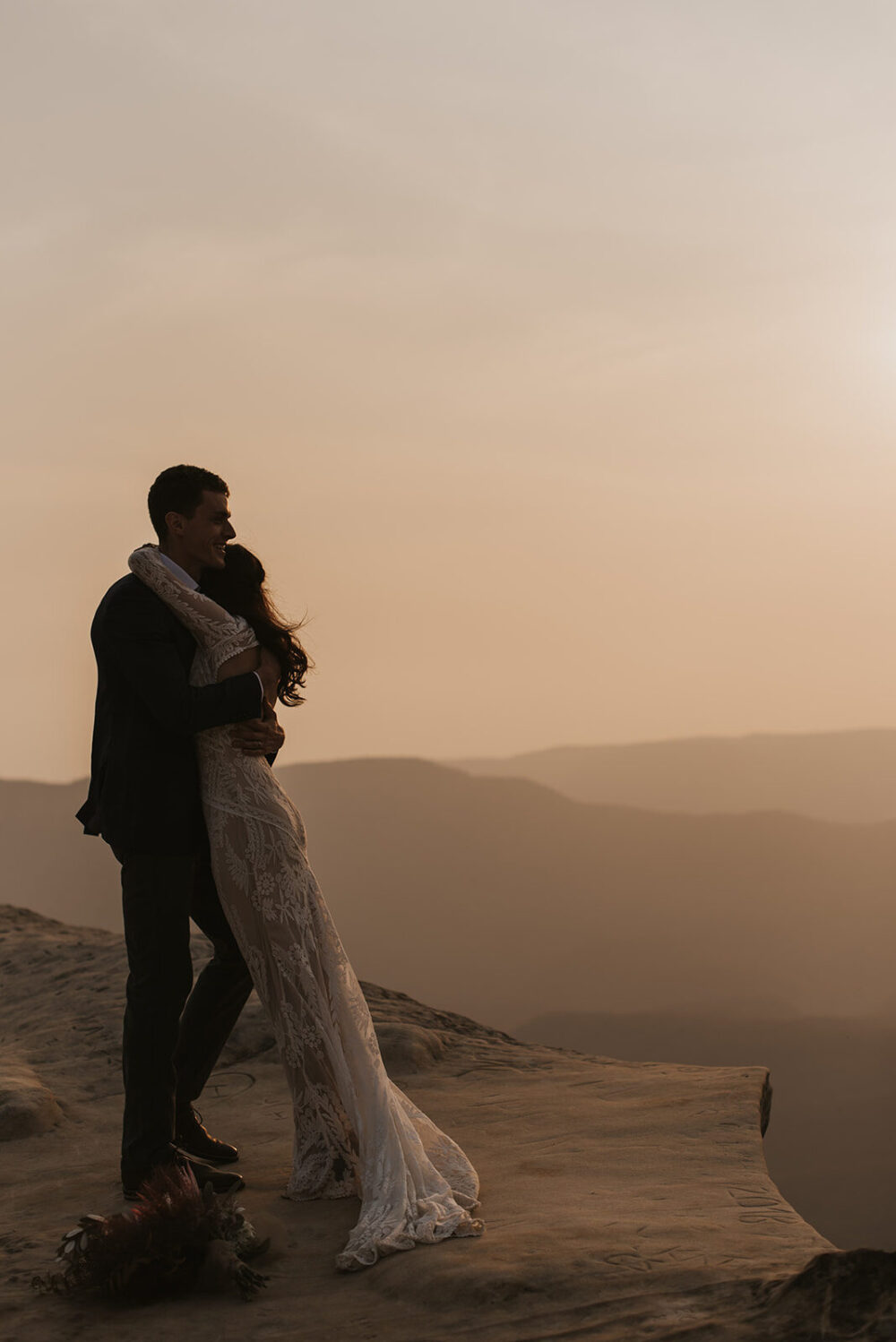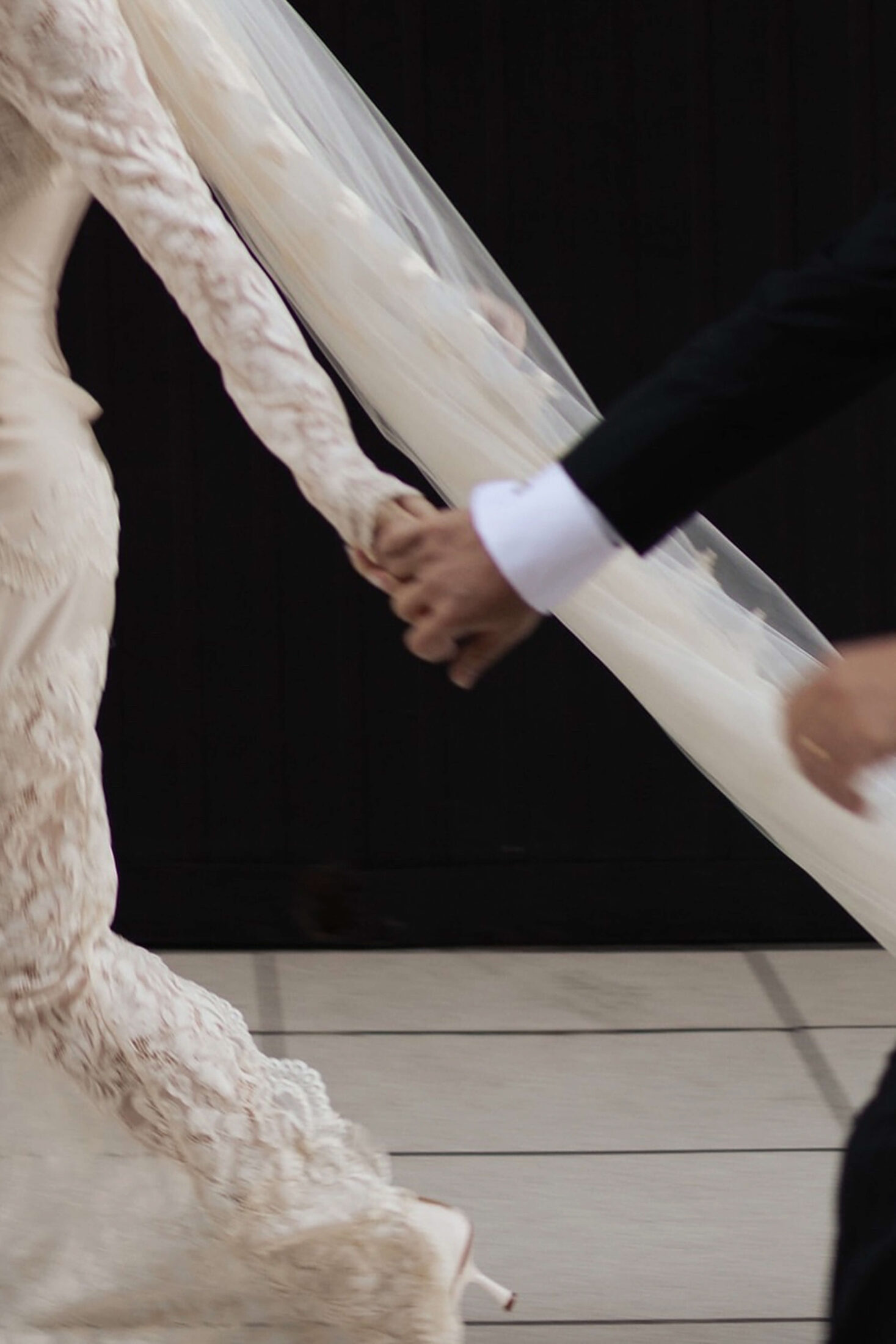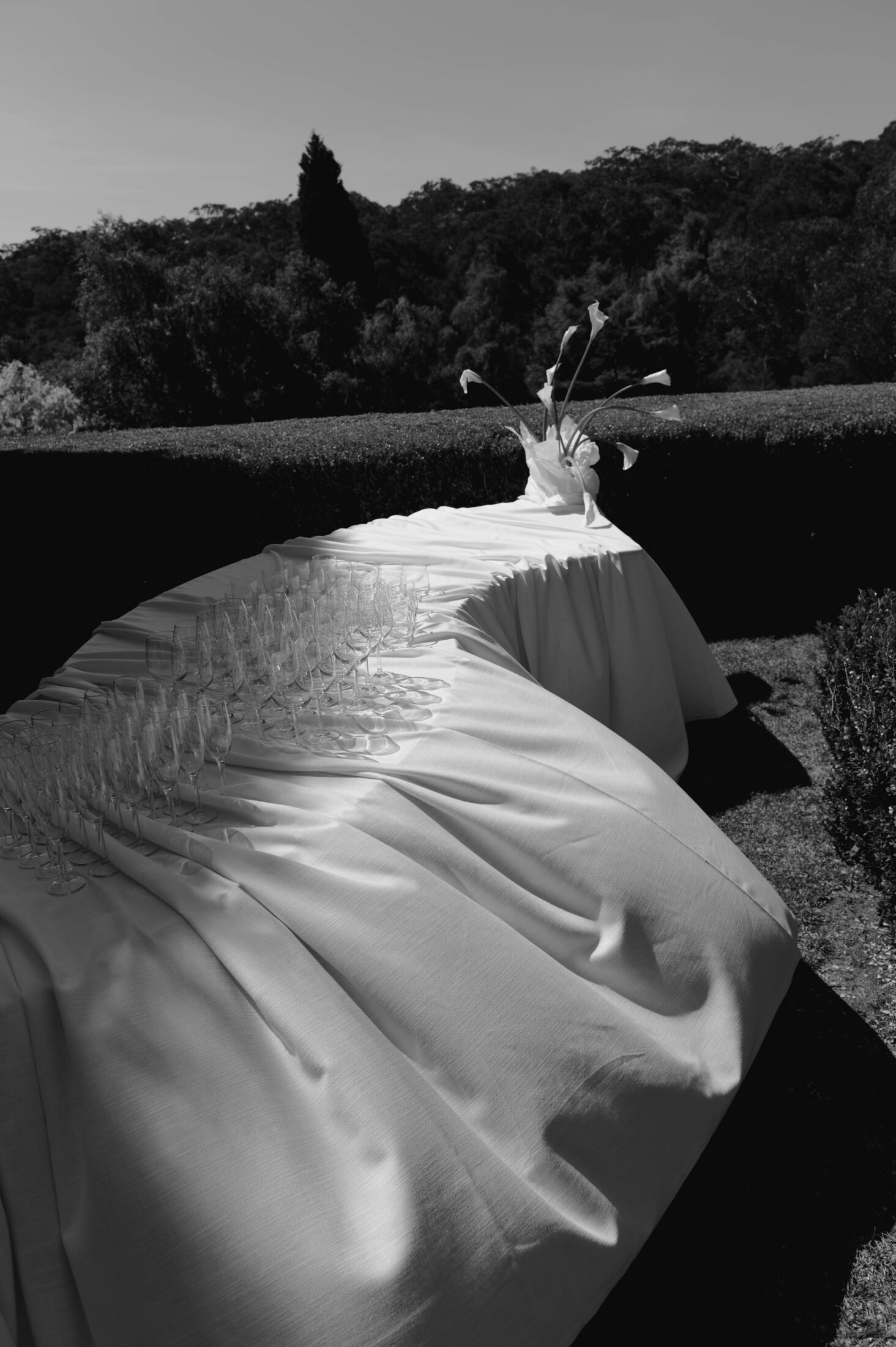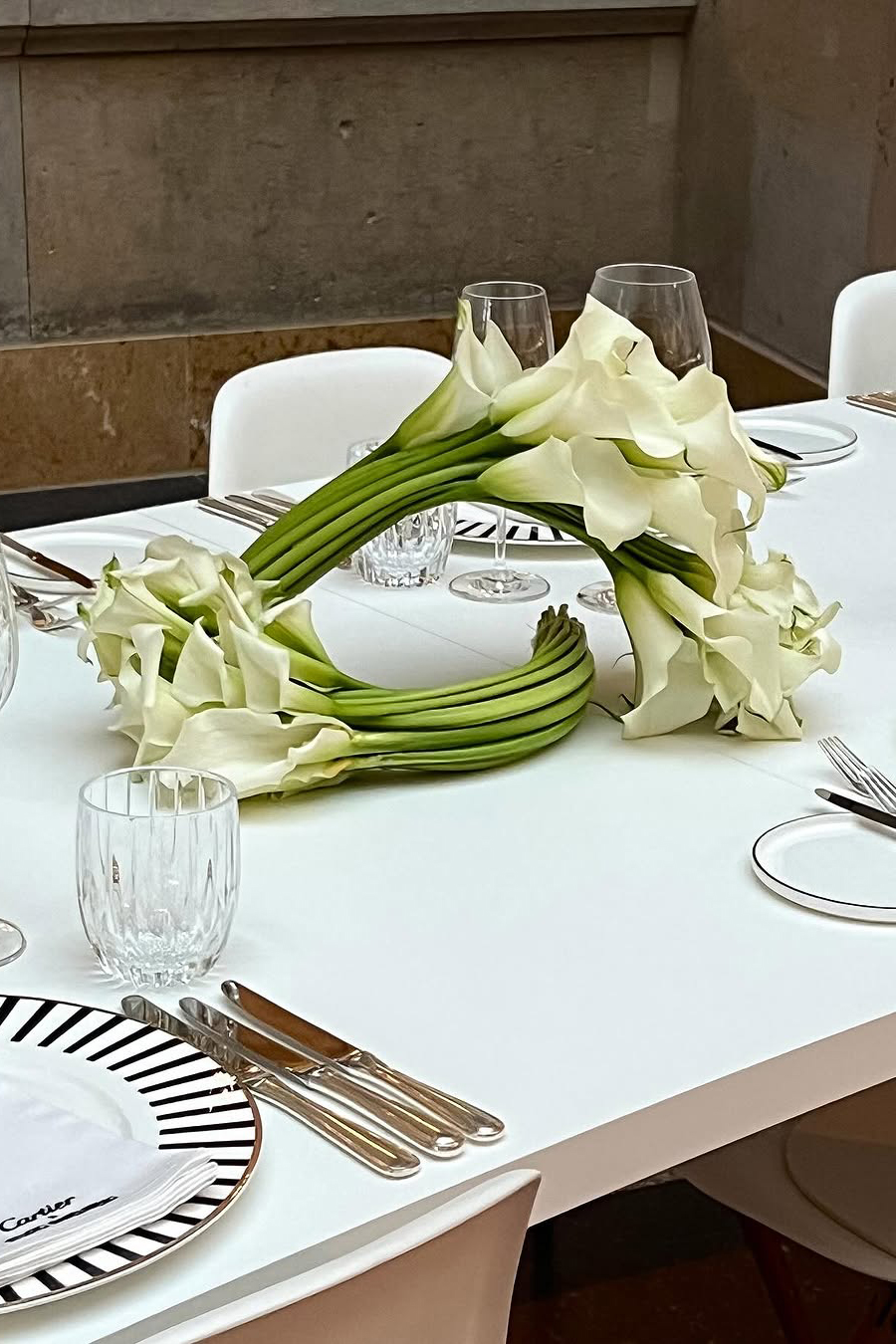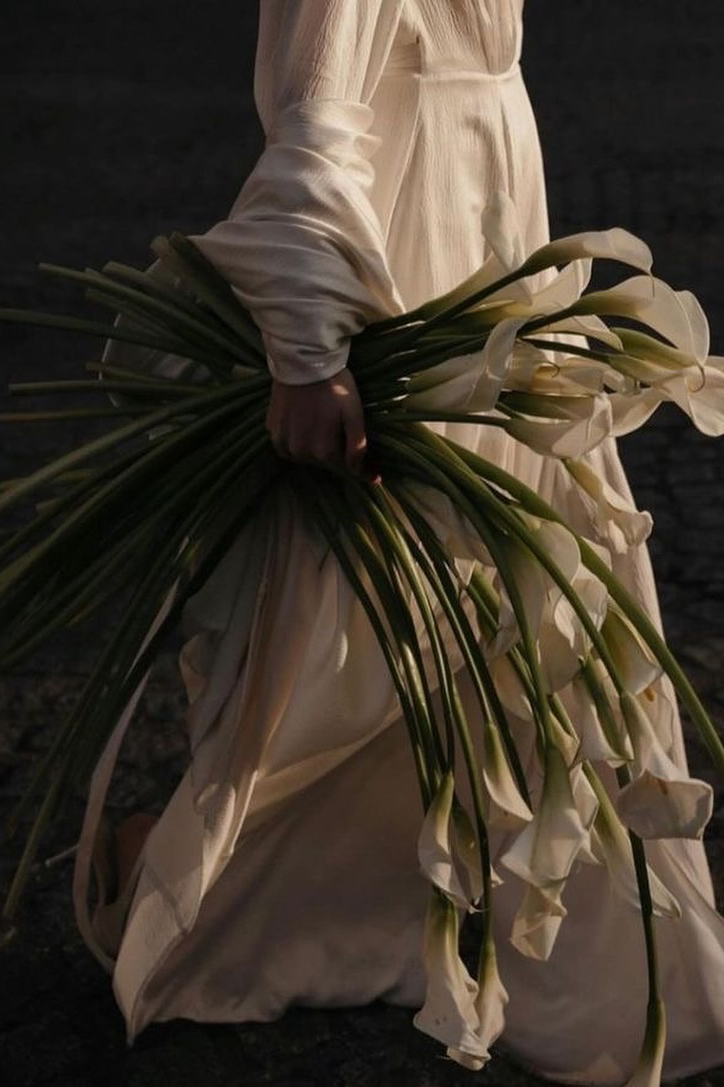Inspiration — Planning & Advice
Budgeting for Wedding Florals: This Is What You Should Know
How much work is really involved – and how much of your budget should wedding florals claim? Maria Beatriz Figueira, founder of Oh, Maria Flores and self-described “flower mind,” explains why it all starts with knowing who you’re hiring – and breaks it down beautifully.
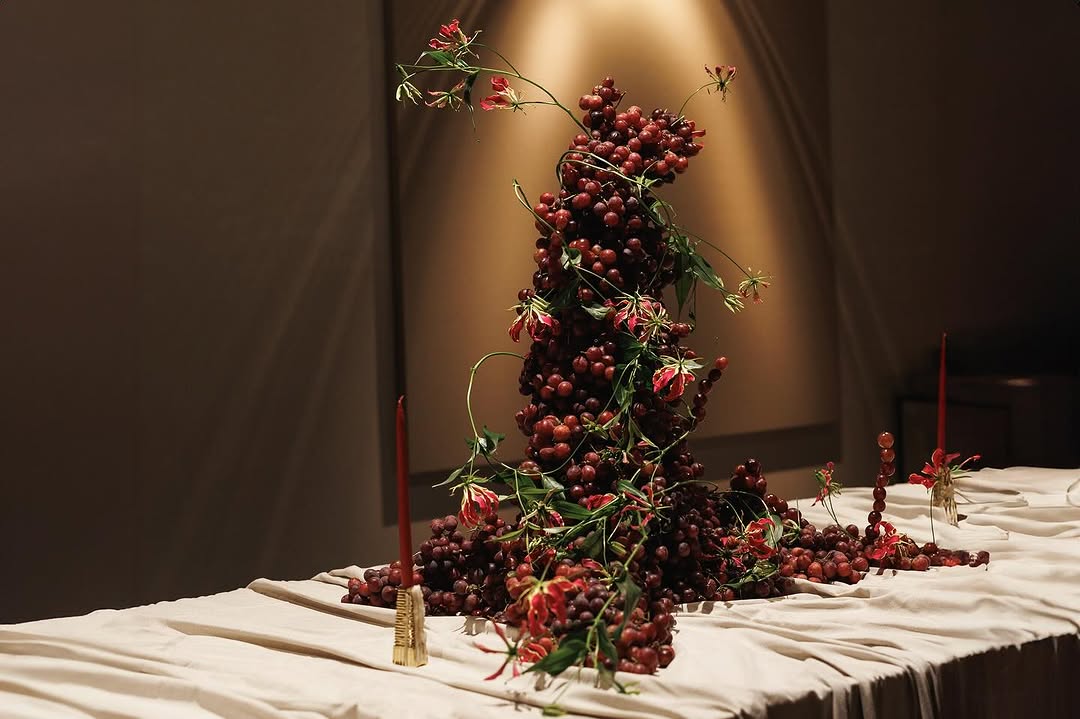
Oh, Maria Flores; as if a quiet sigh, or the opening line of a poem.
As we start chatting, she appears on screen: long, dusty-blonde hair falling softly over her shoulders, expressive brown eyes that hold both warmth and focus. Behind her, shelves of chalky ceramics and clusters of dried stems give quiet hints of the floral world she’s built; part studio, part sanctuary.
Now based in Lisbon, Portugal, Maria is the creative force behind Oh, Maria Flores, a floral studio where design, instinct, and atmosphere meet. “We do everything,” she explains with an easy confidence. “All the vases, the styling; it has to feel whole.”
Her floral language is fluid; going from contemporary, minimal compositions to ethereal designs full of movement, always grounded in shape, tone, and intention. There’s restraint in her work, but also freedom. A kind of choreography in the way she lets each element breathe.
“I’m entirely self-taught,” she says. “In the beginning, just a few years ago, I experimented constantly – fresh flowers, dried ones, just figuring it out as I went.” Her education came from “obsessive research and talking to anyone and everyone” in the Portuguese flower scene. “I still remember the moment I really noticed flowers – the sourcing, the conditioning, the arranging. It was all so immersive. That sense of discovery never left me.”
When it comes to planning, wedding florals often fall somewhere between an essential and a maybe-later. But if you’re dreaming of sculptural installations, immersive environments, or floral storytelling that feels like art, it’s crucial to understand what you’re actually investing in – and why.
Header Image: Oh, Maria Flores, Henrique Isidoro
Register to access your first article free
By signing up, you agree to terms & conditions
“I believe there are three types of florists, and understanding the difference can really help couples choose someone who aligns with their vision. Each approach comes with a different level of creative involvement – and budget.”
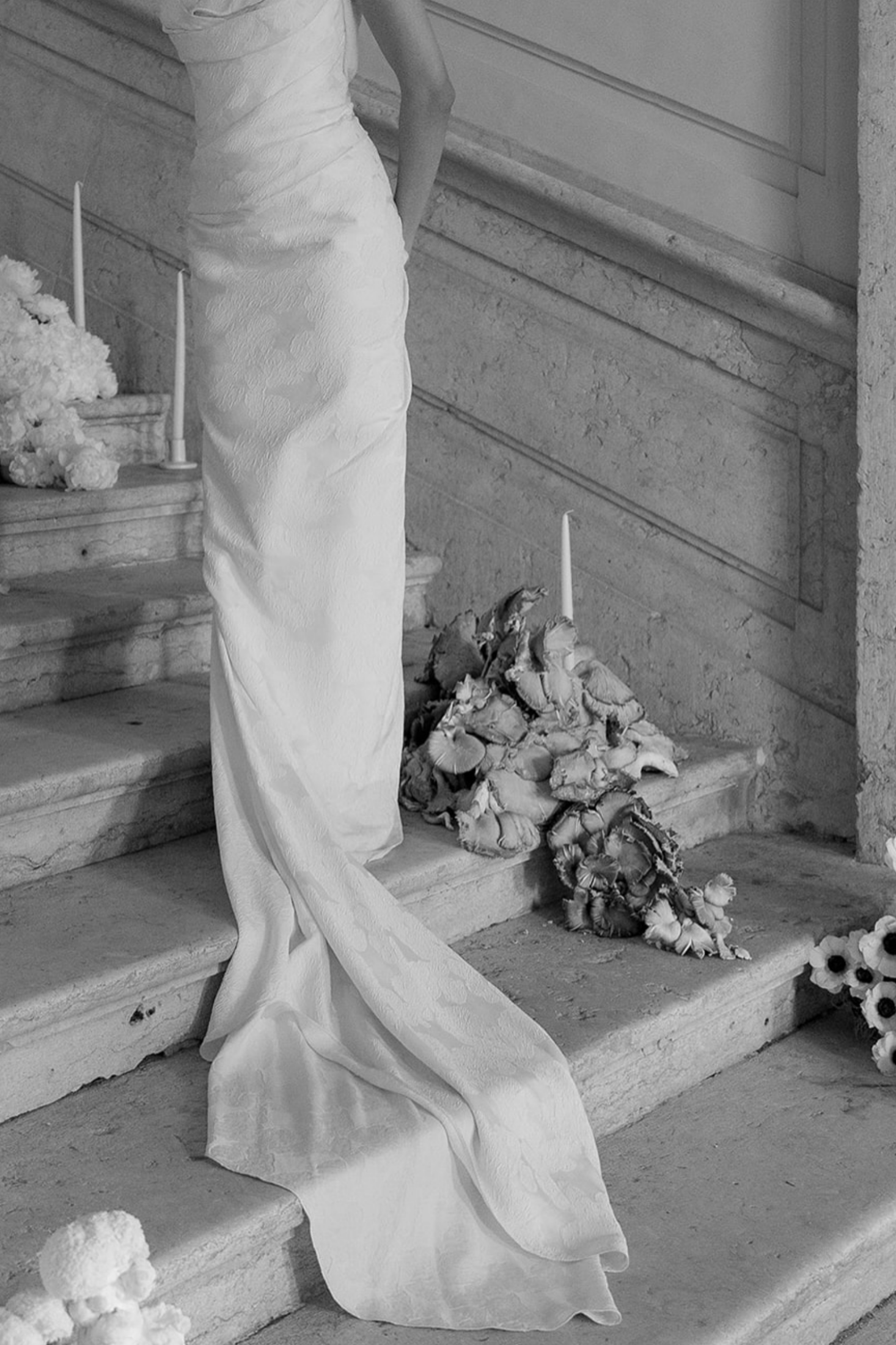
Oh, Marie Florals
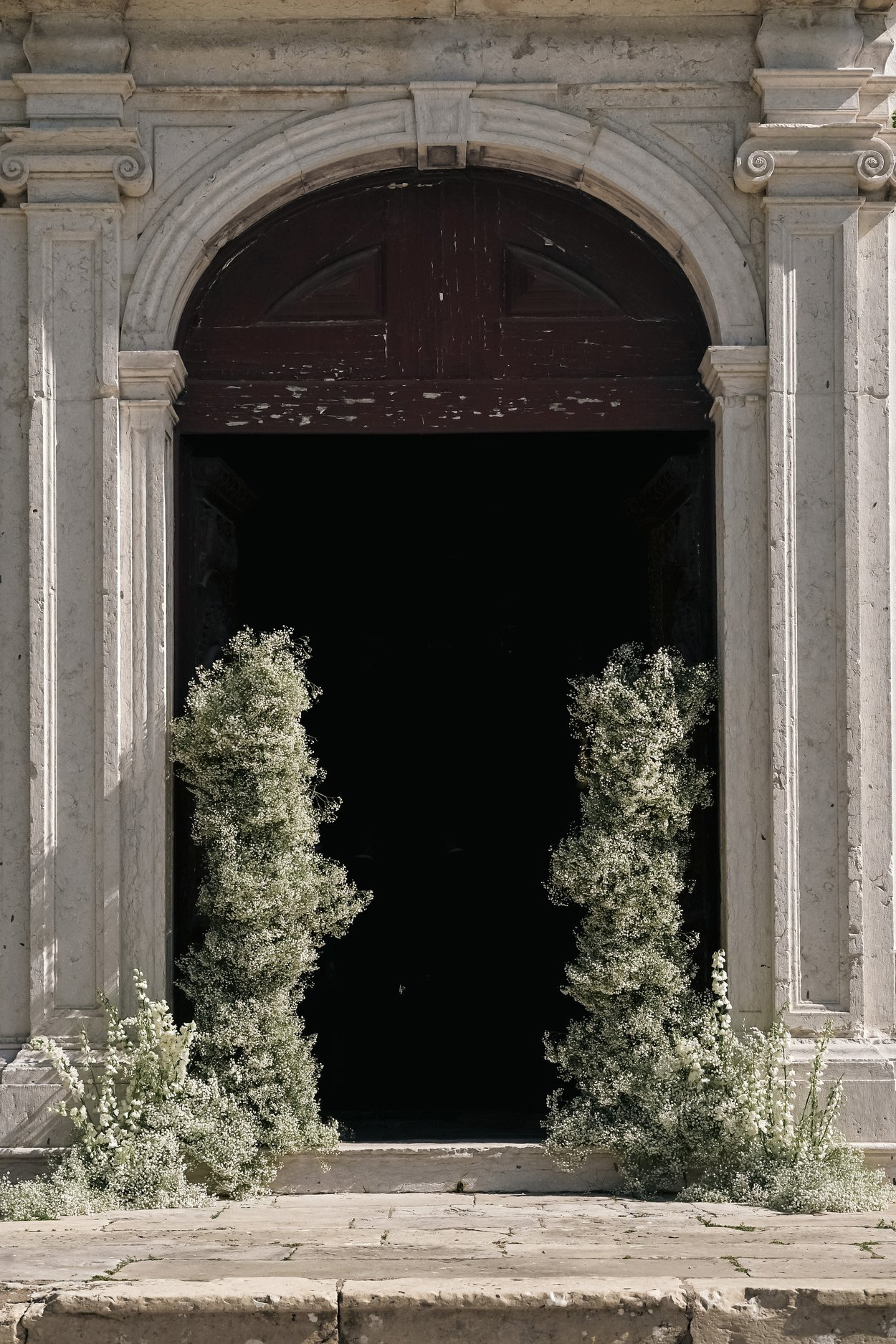
Oh, Marie Florals
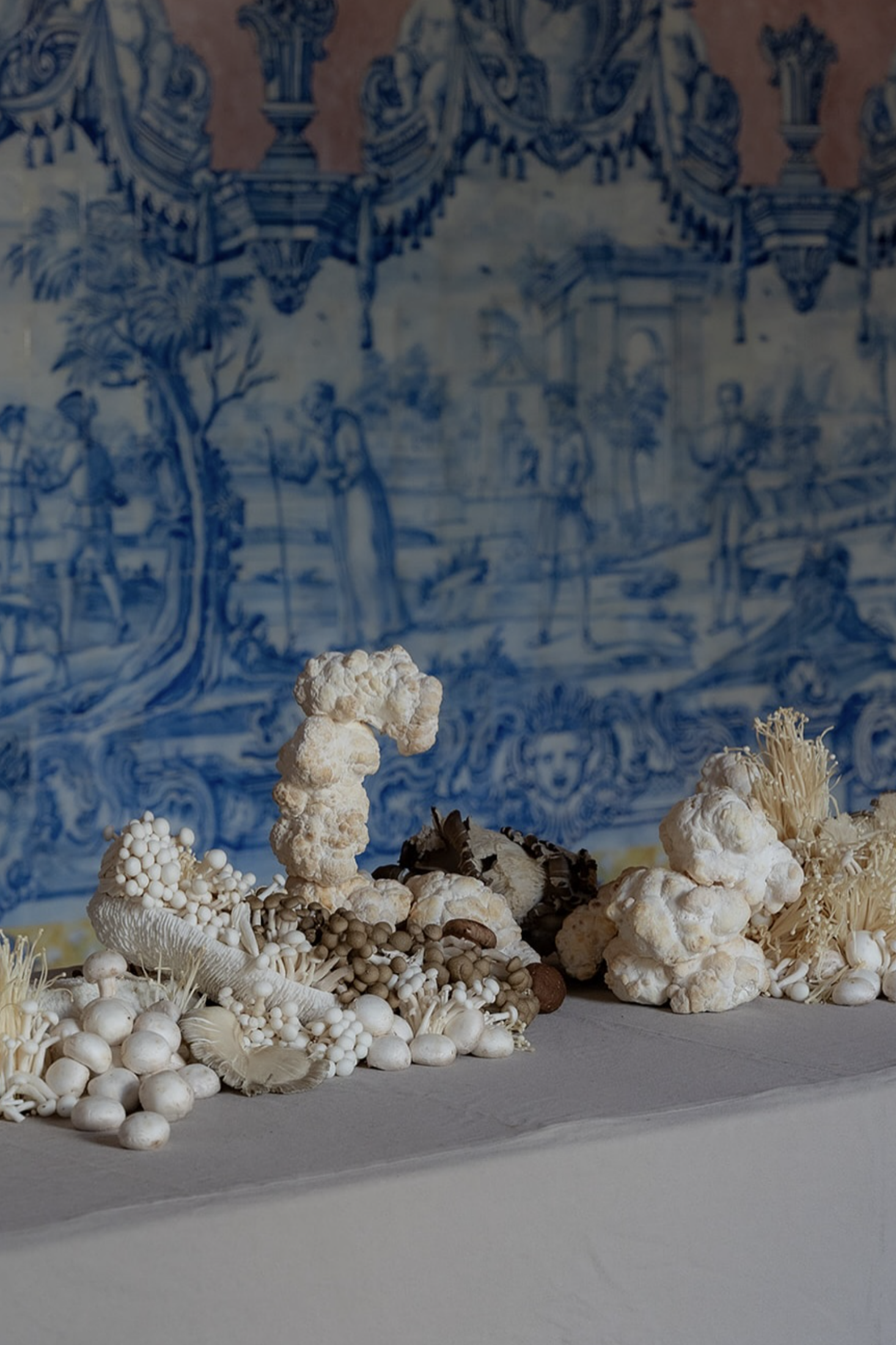
Oh, Marie Florals

Oh, Marie Florals

Oh, Marie Florals
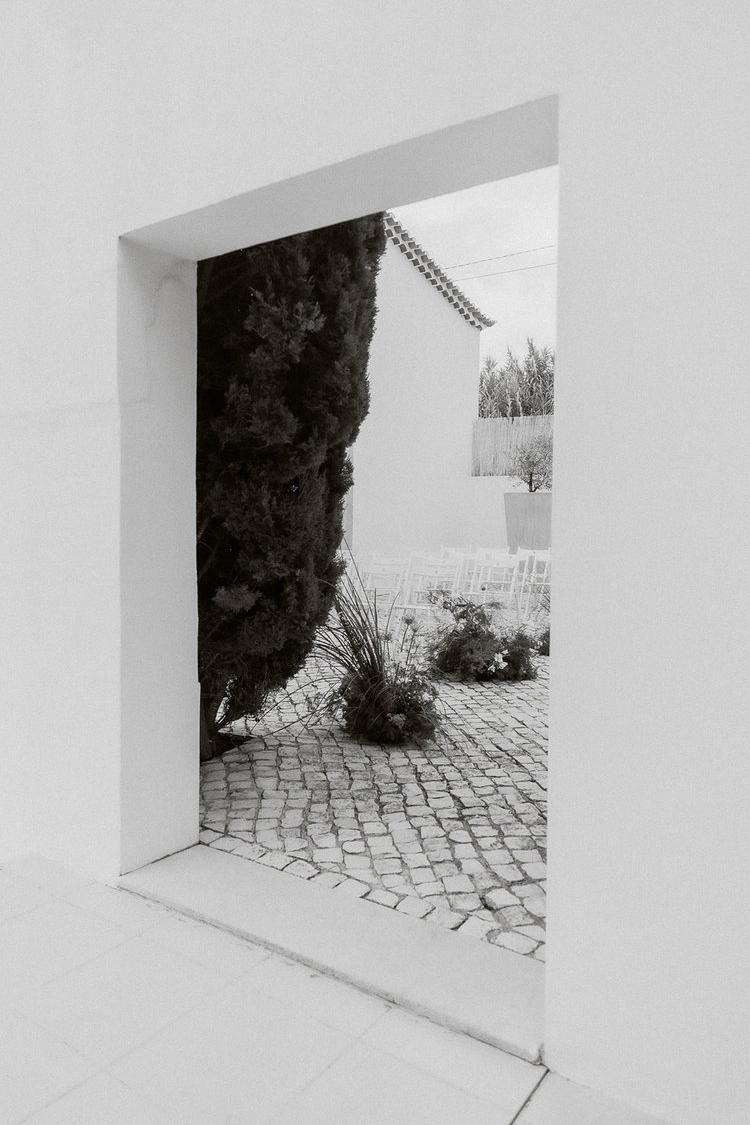
Oh, Marie Florals
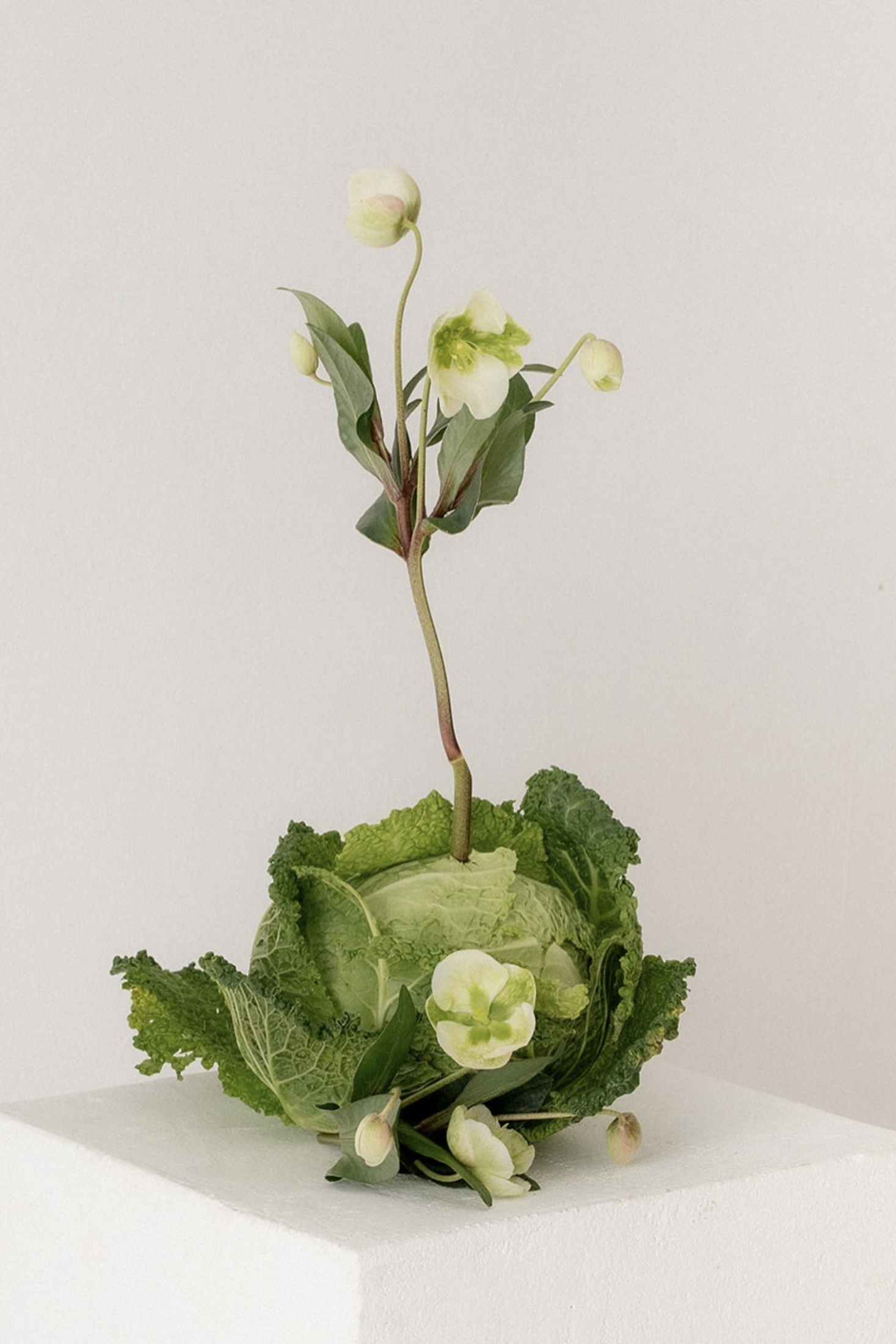
Oh, Marie Florals
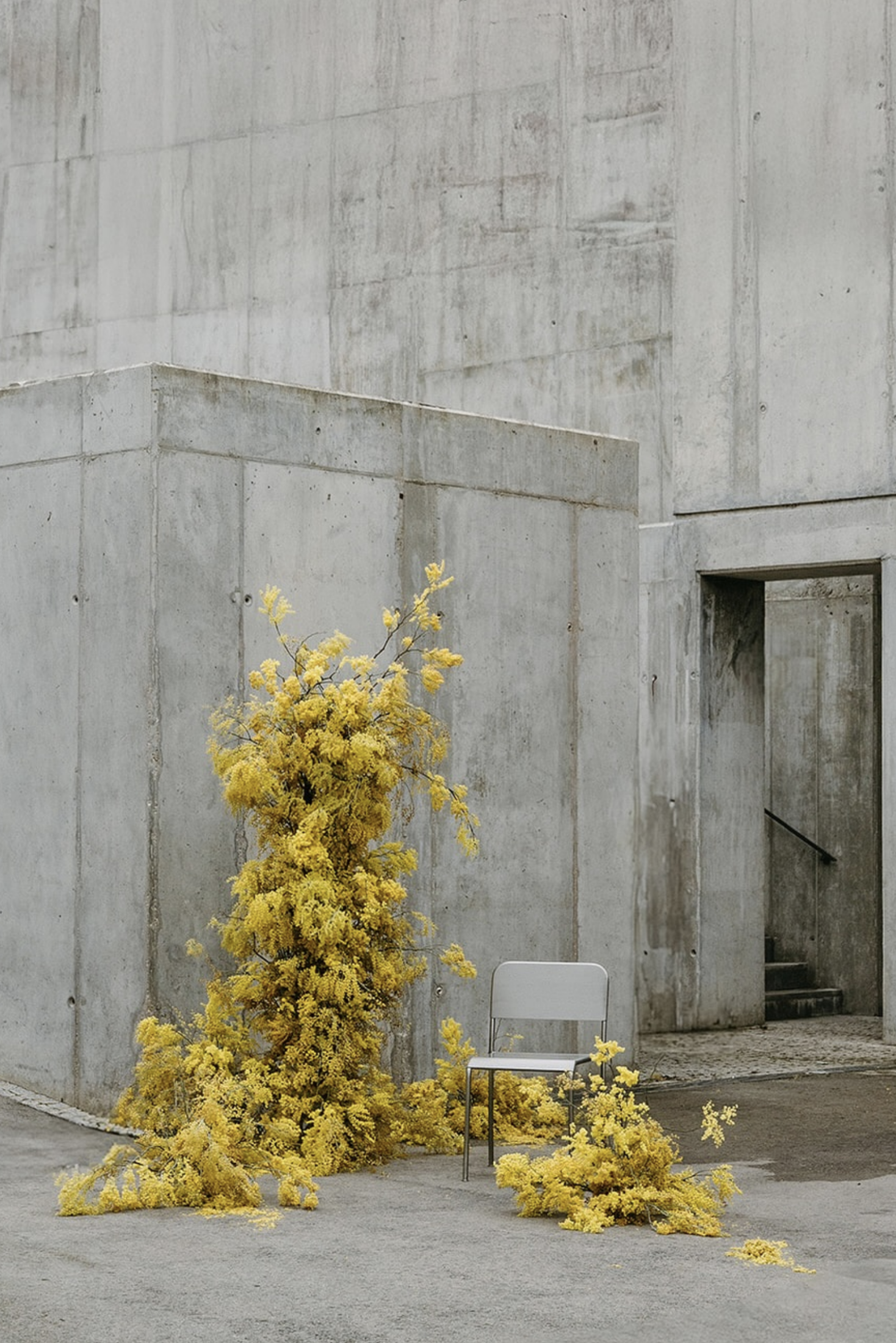
Oh, Marie Florals
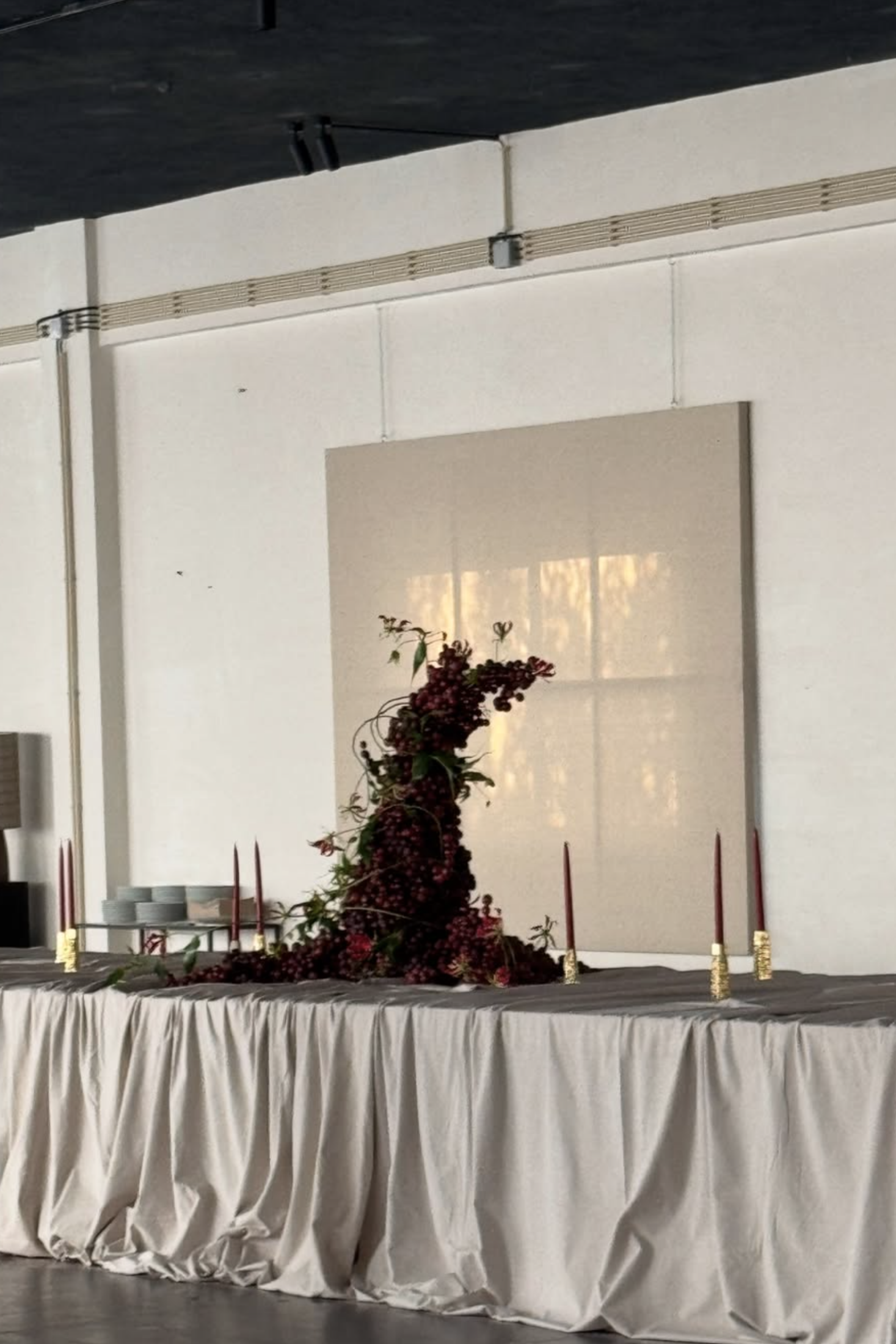
Oh, Marie Florals
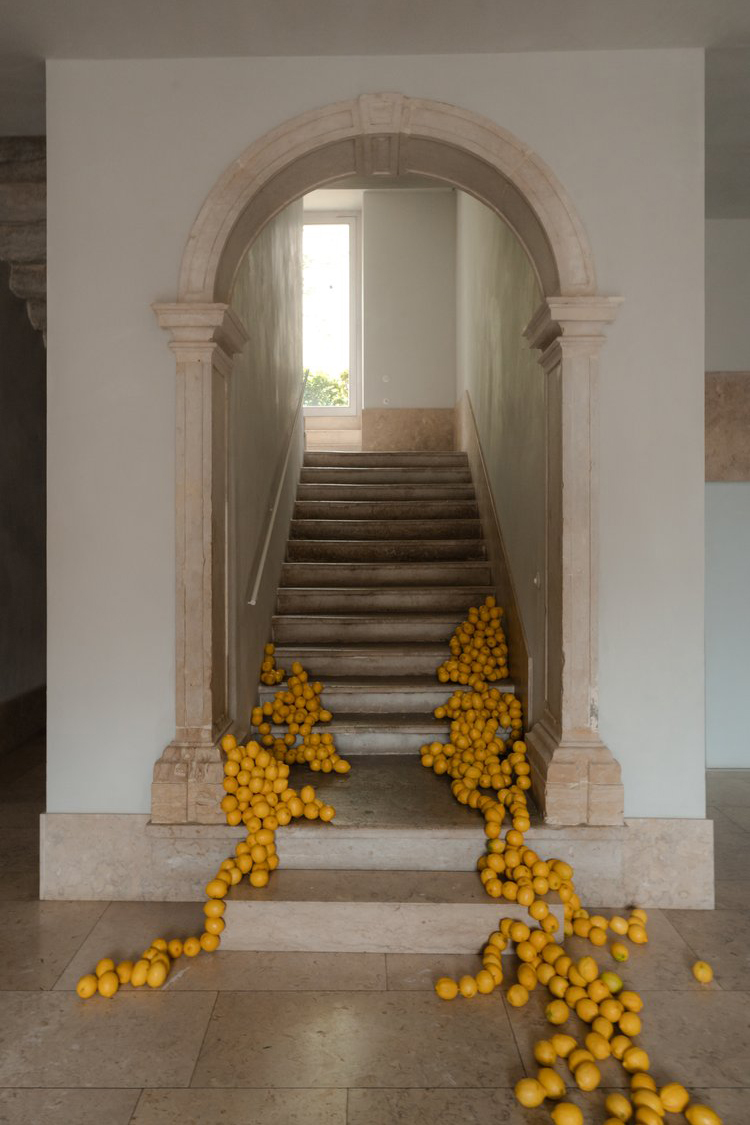
Oh, Marie Florals
1. Know Who You’re Hiring: Floral Artist vs. Florist
The first (and most often overlooked) budget consideration? Understanding who you’re actually hiring. “I believe there are three types of florists,” she explains. “And understanding the difference can really help couples choose someone who aligns with their vision.” Each approach comes with a different level of creative involvement – and budget. Floral artists typically represent the highest investment, as their work is bespoke, time-intensive, and conceptually driven. Signature-style florists sit somewhere in the middle, while execution-based florists tend to be the most affordable option, especially for couples with a clear vision and a more straightforward brief.
The Floral Artist
“This is where I see myself,” Maria explains. Floral artists approach each event as a bespoke creative collaboration. Their work is conceptual, emotionally driven, and fully integrated with the overall art direction of the day. “It’s storytelling through flowers. Every project is different because every couple is different.” Expect a process that involves exploration, experimentation, and deep creative partnership – and pricing that reflects the time and vision involved.
The Signature-Style Florist
Maria: “These florists have a strong, recognizable aesthetic. They tend to work within a consistent palette of colors, flowers, and forms across most events. If you’re drawn to their style and want exactly that, they’ll deliver a beautiful, cohesive result. But the design may be more about stepping into their world than creating something that reflects yours.”
The Execution-Based Florist
Maria explains: “More production-focused, these florists work from clear input — inspiration images, flower lists, and a set budget. They’re ideal for couples who know exactly what they want and are seeking a streamlined, efficient process. The focus is less on concept, and more on execution: bringing your references to life, rather than building a design from the ground up.” To draw the distinction with her own work, she adds: “Working with a floral artist means commissioning a creative mind, not just a service — and the investment reflects that. Understanding these distinctions early helps couples choose the right fit, both creatively and financially.”
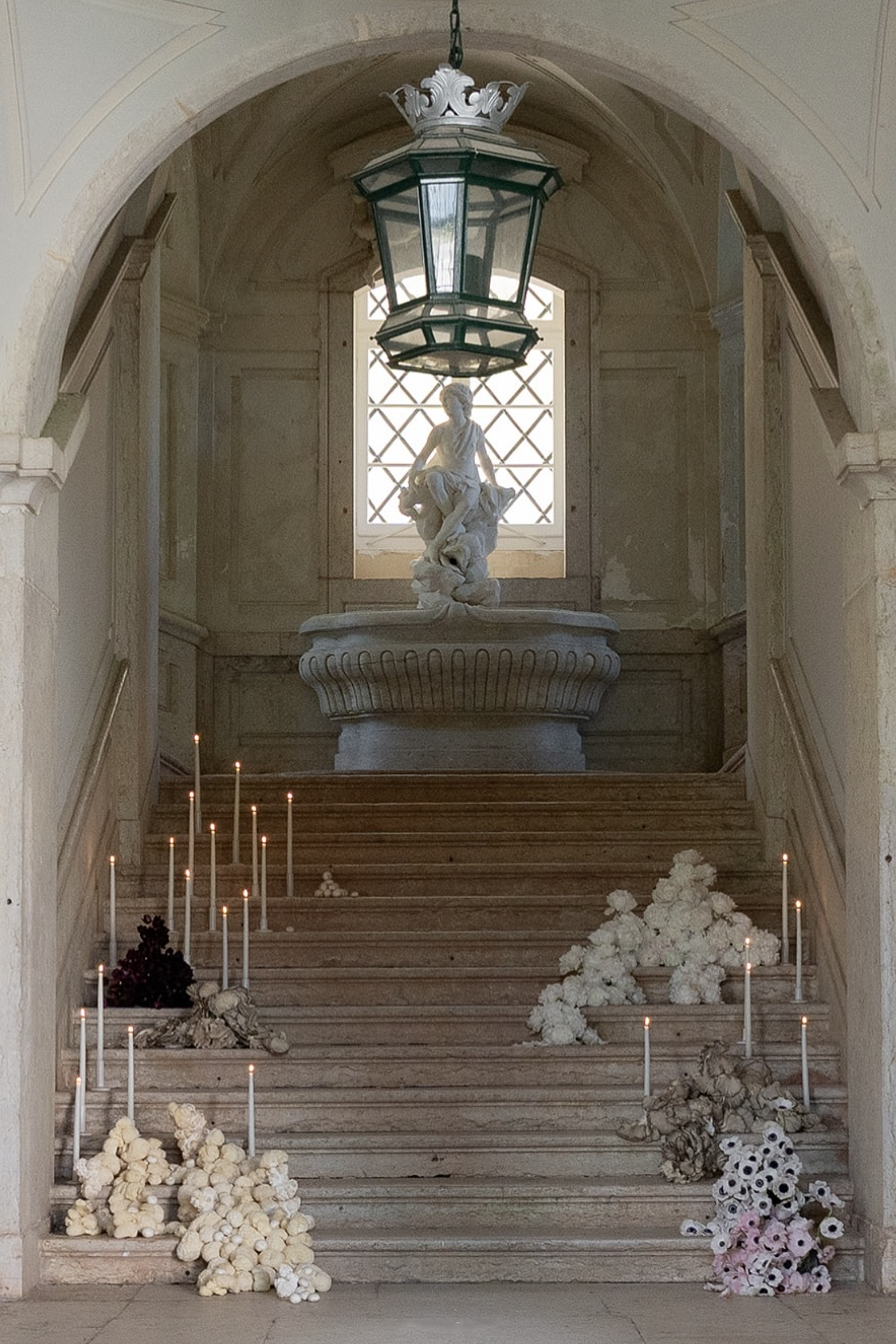
Oh, Maria Flores
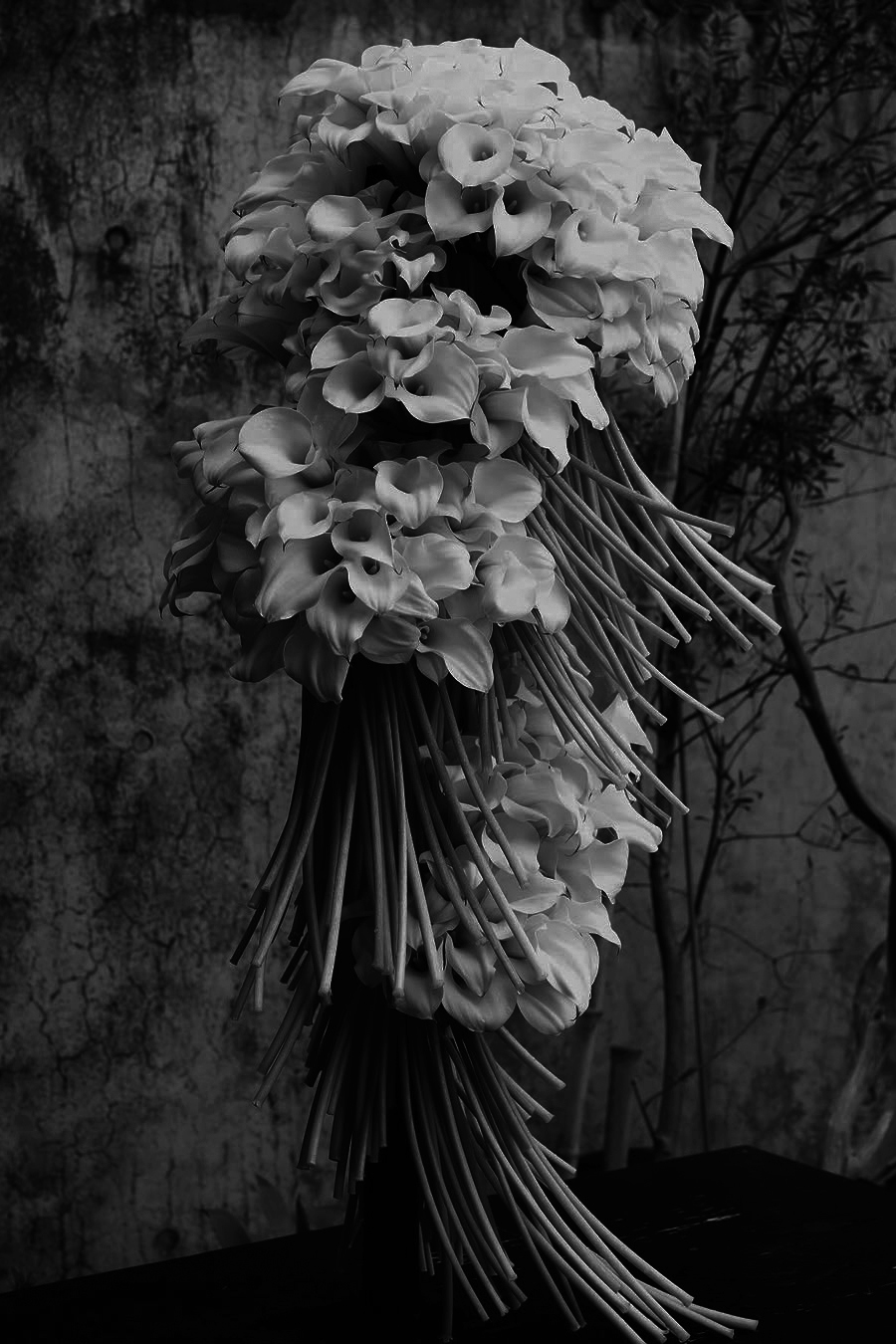
Yuji Kobayashi
“To me, timelessness doesn’t mean avoiding trends. It means doing something so well and so emotionally true that in 20 years, you still feel it.”

Athena Calderone

Agos Muni

Cordero Atelier
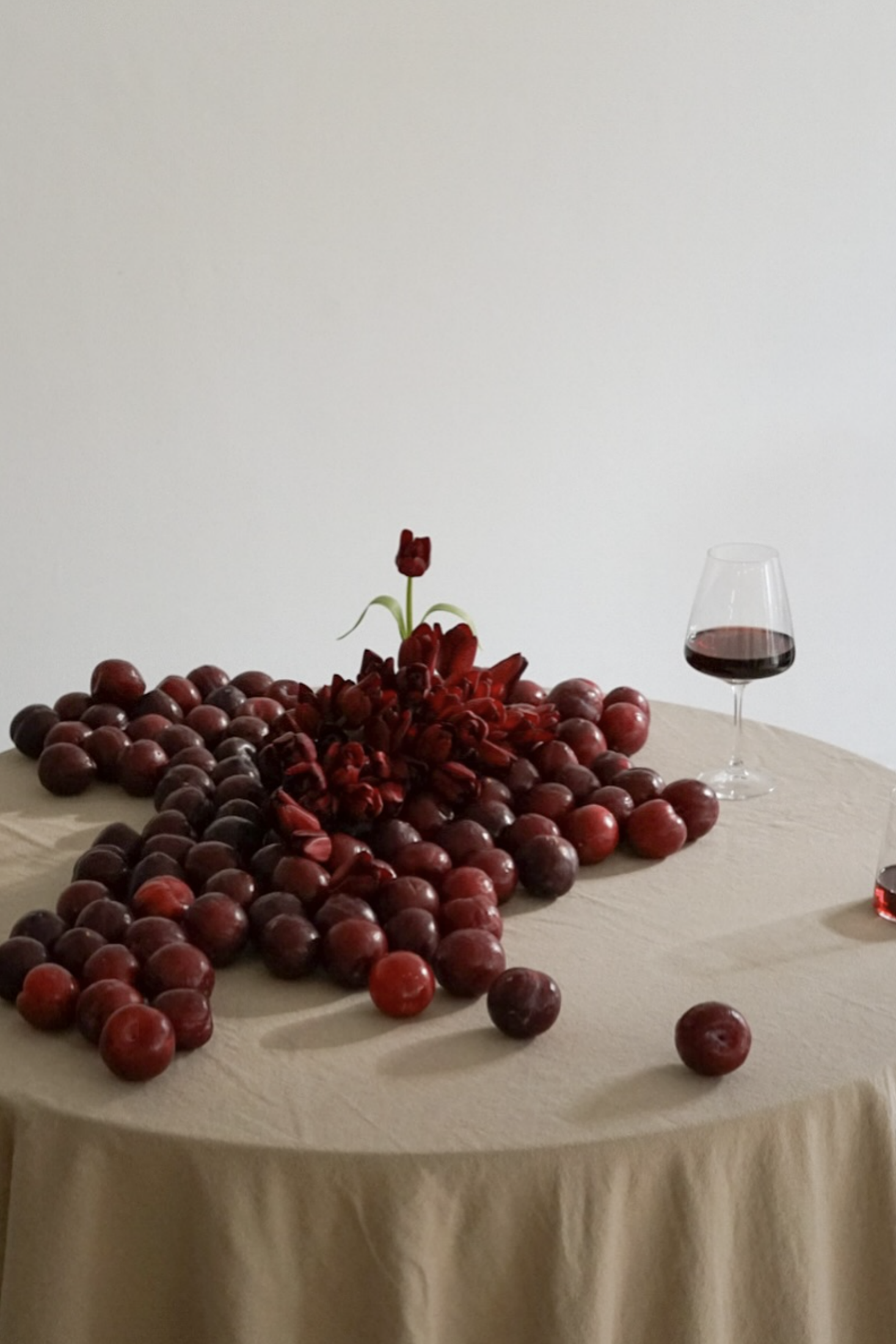
Oh, Marie Florals
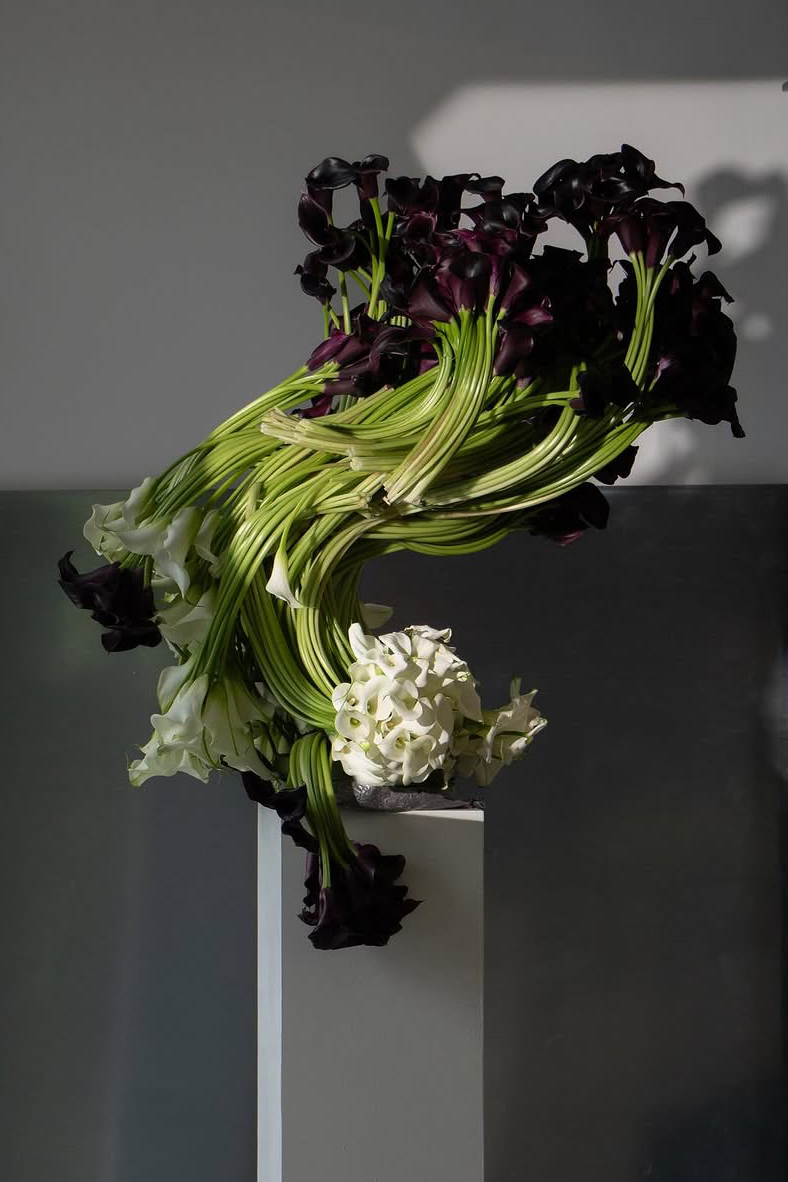
Carolin Ruggaber
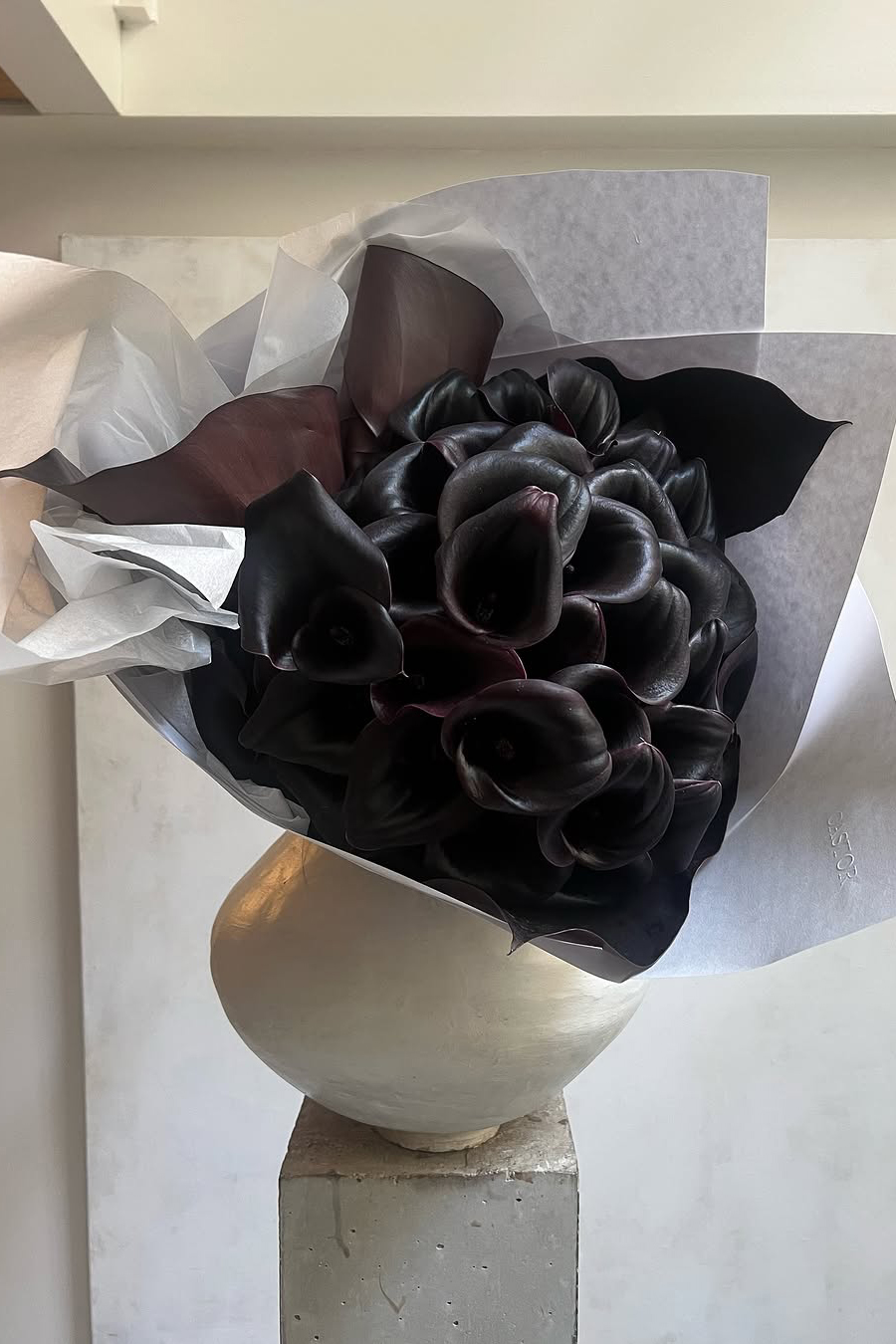
Castor Fleuriste
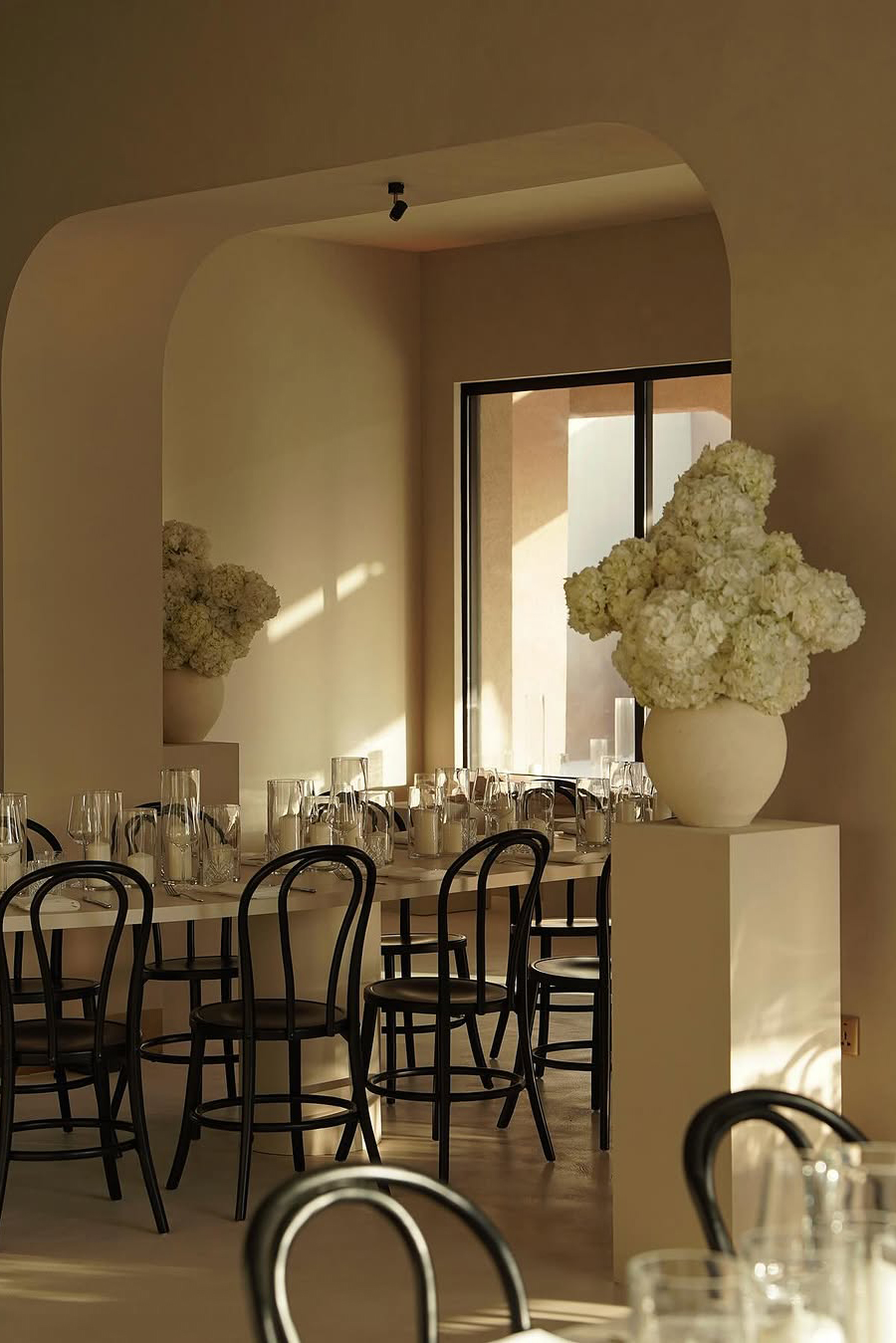
Gosha Flowers

Oh, Marie Florals
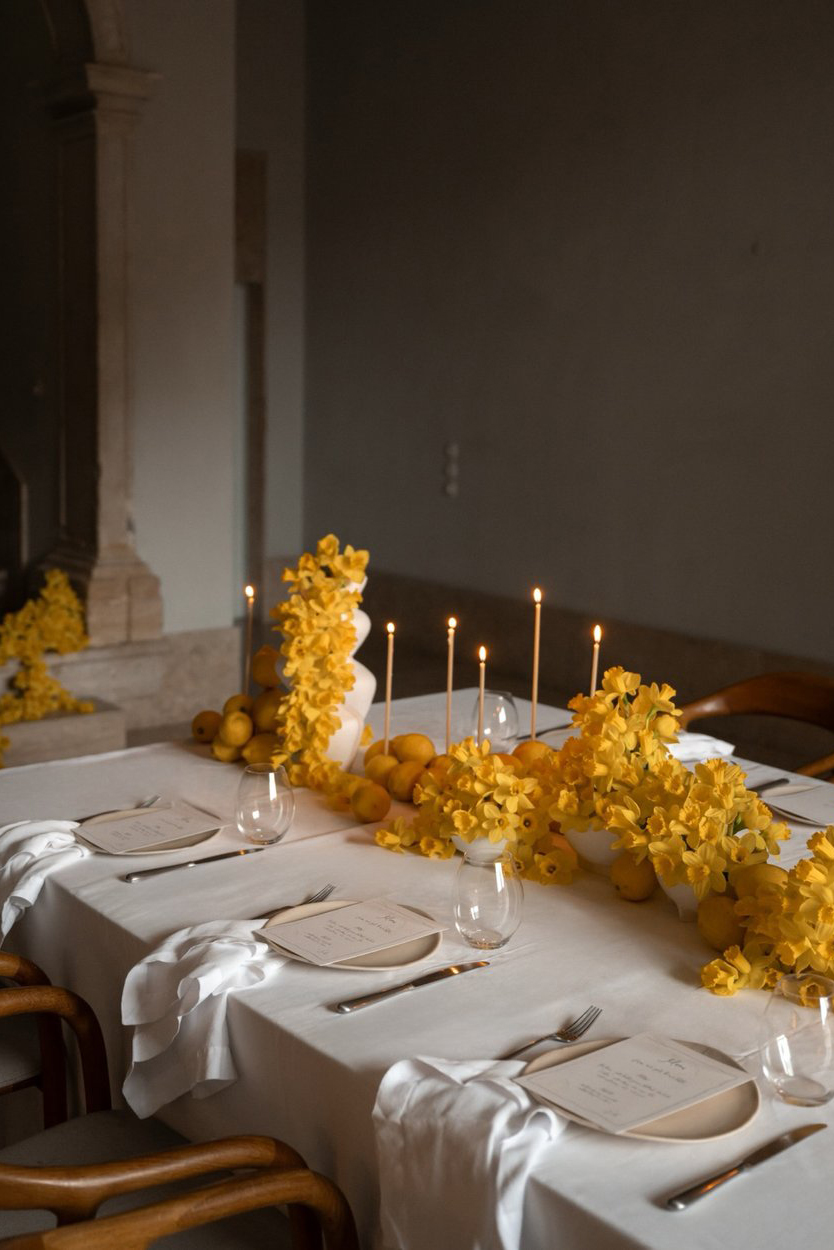
Oh, Marie Florals

Oh, Marie Florals
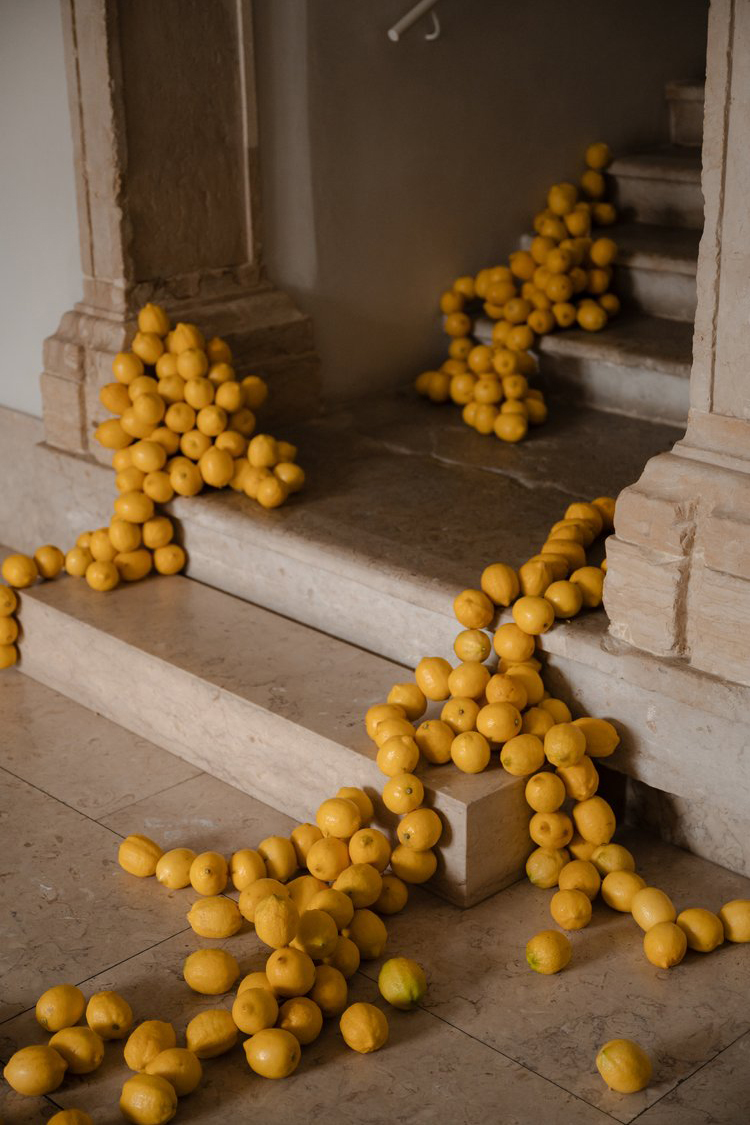
Oh, Marie Florals

Oh, Marie Florals
2. Floral Art Is Often Double the Cost of Photography – Here’s Why
“I tell couples when they approach me specifically: your flower budget should be at least double what you’re spending on photography,” says Maria. “And it’s not just because flowers are expensive – it’s everything around them.” From concept to breakdown, floral design is production-heavy. It involves a team, vehicles, perishables, days of setup and teardown, and a deep collaboration process. You’re not just paying for stems – you’re paying for vision, labor, time, and transformation. If florals are a central part of your aesthetic, it’s worth the investment. If they’re not going to be photographed or remembered, reconsider how much you’re allocating.
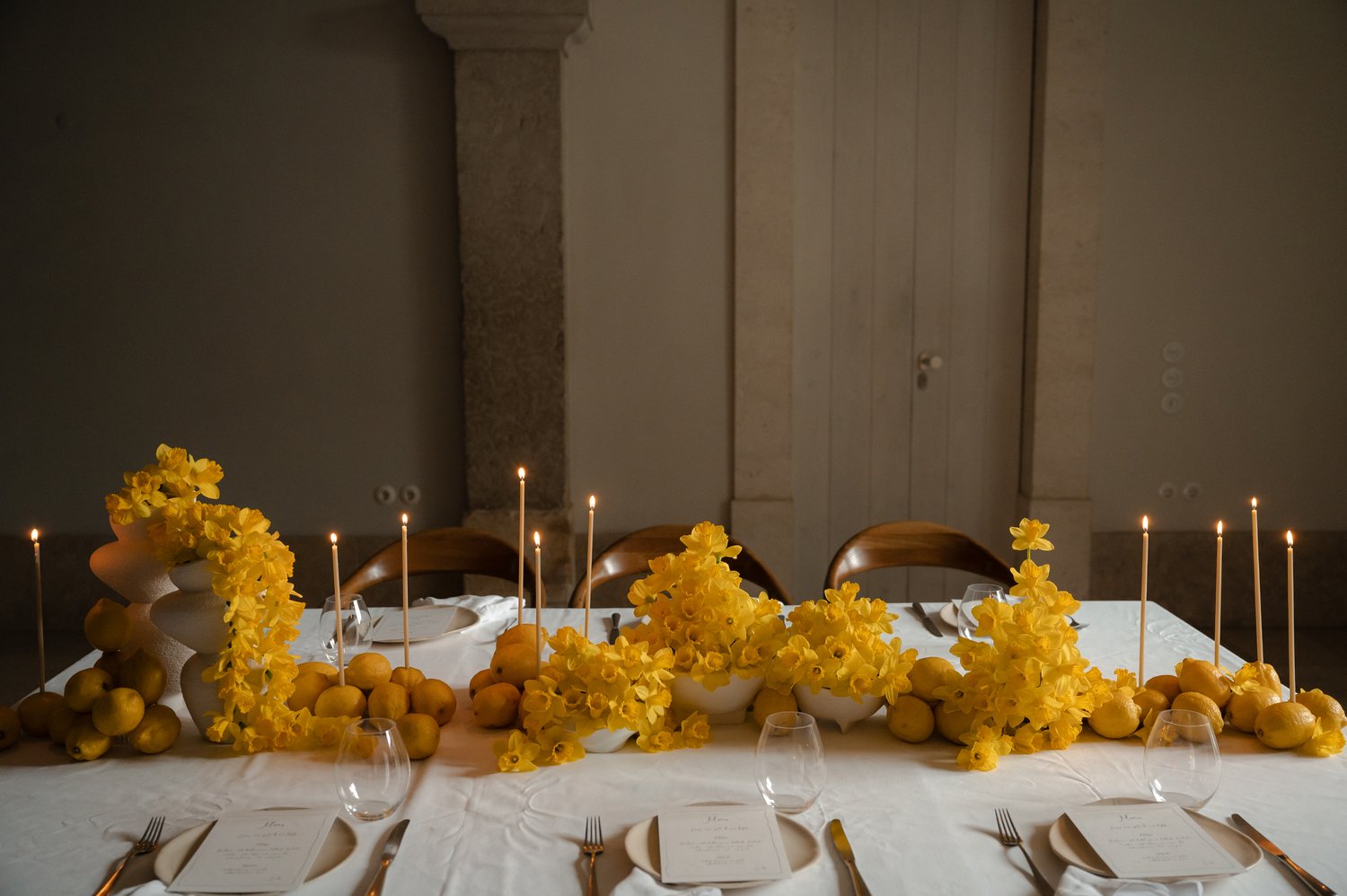
3. Three Rules for Getting the Most from Your Floral Budget
If there’s one thing Maria wants couples to walk away with, it’s this: three insights that can transform the way you think about wedding florals.
Trust your florist
They know how to get the most impact per euro spent – what’s in season, what works with your venue, what creates mood.
Repurpose where possible
Ceremony flowers can be moved. Arches can become photo backdrops. Details can be reused. It’s efficient, and still beautiful.
Be flexible
Don’t fixate on peonies in December. Let your florist guide you toward the best version of your vision based on season, palette, and structure.
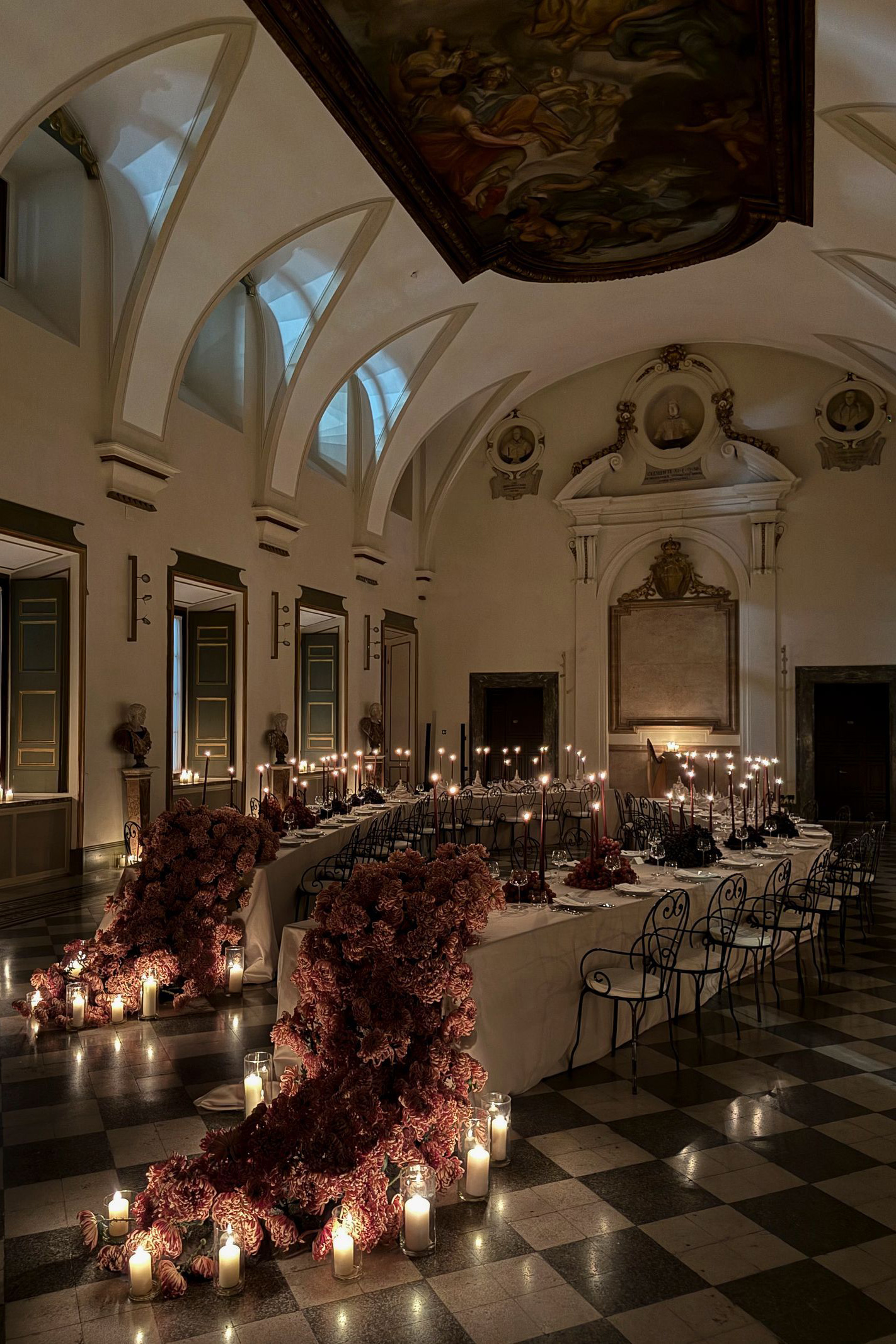
Omer Gilony

Karina, Beans & Flowers
4. Investment-Worthy Florals That Tell a Story – and Stay Timeless
Maria doesn’t chase trends – she transforms them. Her work feels editorial, poetic, and entirely personal. “To me, timelessness doesn’t mean avoiding trends,” she says. “It means doing something so well and so emotionally true that in 20 years, you still feel it.” She’s always experimenting. “There are so many trends – they follow each other at a relentless pace,” she adds, half-laughing. “By the time October rolls around, everyone’s already over it.” Instead, Maria prefers to stay attuned to her own rhythm: instinctive, unhurried, and grounded in texture. Lately, she’s been drawn to fungi. “Our last editorial at Palácio Correio Mor was all mushrooms – large-scale installations, really textural, really delicate. That’s definitely a current favorite.” That tablescape – sculptural, almost otherworldly – featured clustered oyster mushrooms, enoki, cauliflower fungi, and king trumpets arranged like a living still life beneath blue-and-white azulejos. Not a flower in sight, yet entirely floral in spirit.
“Another one I absolutely loved was the chocolate tablescape. Not just because of how it looked, but because it sparked such amazing conversations – about my process, the design, even how we manipulated the chocolate. I got to connect with incredible people through that piece. It was a really special moment.” That’s the real mark of investment-worthy florals: they don’t just look good on your wedding day. Their imprint stays with you, long after the petals fall (or the chocolate has melted).
See our global edit of florists on The Lane Directory.
Four Seasons Hotel Kyoto Japan: An Artisanal Sanctuary
Inside Four Seasons Hotel Kyoto’s artisanal sanctuary, The Lane transform this historical location into a magical destination wedding setting.

Join The Lane
Sign up to The Lane monthly Journal.
